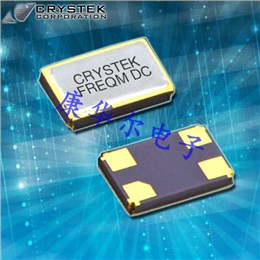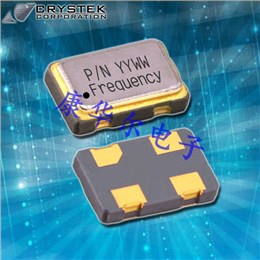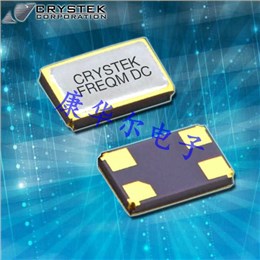解开遥遥领先HELE Active Crystal Oscillator神秘面纱,晶体与振荡器:解开这些组件
在电子领域,晶体和振荡器是技术讨论中经常出现的两个术语。虽然它们可能看起来相似,但深入探究就会发现显著的区别。本文旨在揭示这些差异,重点关注晶体、MEMS和硅振荡器,并对比它们的优势。
破解晶体与振荡器难题
为了理解晶振和晶体振荡器的区别,有必要理解每个术语所代表的含义。当受到电压时,晶体充当机械谐振器,产生具有精确频率的电信号。相反,振荡器是一种能够在没有输入信号的情况下产生输出信号的电子电路。
晶体与晶体振荡器
根本区别在于它们的运行机制。谐振器使用晶体,振荡器利用谐振器(通常是晶体)来维持振荡。振荡器电路中晶体的这种集成产生了术语“晶体振荡器”
精密设备晶体
精密晶体设备在计算机、手机和其他电子设备中至关重要。因此,许多制造商提供这些元件的精密规格,以满足用户需求。
今天的人类认为晶体振荡器是最可靠的计时设备之一。根据工作负载和要求,他们可以将它们用于时钟信号等低频操作。
晶体振荡器的优势
晶体振荡器有几个优点,因此在各种应用中被广泛采用。它们的主要卖点是能够提供稳定的时钟信号。它们的高频稳定性和极小的相位噪声使它们以产生高质量信号而闻名。
石英晶体振荡器的吸引力不仅仅在于它们的性能。这些振荡器中使用的石英晶体既小又便宜。这使得它们成为省钱和节省空间的好选择。此外,连接晶体振荡器的简单性使得将它们集成到电路中变得简单易行。
MEMS振荡器与晶体振荡器:一场平衡竞赛
当比较MEMS振荡器和晶体振荡器时,两个竞争者都有独特的优势。MEMS(微机电系统)振荡器利用微小的机械装置作为谐振器。它们的突出特点是出色的温度性能,比其他晶体振荡器高出10到40倍。
另一方面,晶体振荡器在相位噪声/抖动和电流消耗方面胜过MEMS振荡器。因此,选择MEMS振荡器还是晶振取决于应用的具体需求。解开遥遥领先HELE Active Crystal Oscillator神秘面纱.
MEMS与晶体振荡器
MEMS振荡器体积小、效率高、耐用、在不同条件下稳定,功耗低、尺寸小。它们还拥有诱人的价格点。然而,与晶体振荡器相比,MEMS振荡器的相位噪声性能通常较差。
晶体振荡器与MEMS振荡器
晶体振荡器具有出色的相位噪声/抖动性能,同时价格相对低廉。它们还能更好地承受极端温度,温度性能比MEMS振荡器高10-40倍。
硅振荡器与晶体:新来的家伙
台产晶振编码
品牌
描述
频率
电压
频率稳定性
SSW008000I3CHE-T
加高有源晶振
HSO321S/8MHZ/3.3V/50PPM/-40~85C/
8.000MHZ
3.3V
±50ppm
SSW024576F3CHC-T
加高有源晶振
HSO321S/24.576MHZ/3.3V/30PPM/-40
24.576MHZ
3.3V
±30ppm
SSW010000I3CHE-T
加高有源晶振
HSO321S/10MHZ/3.3V/50PPM/-40~85C
10.000MHZ
3.3V
±50ppm
SSW025000I3CHE-ST7R2
加高有源晶振
HSO321S/25MHZ/3.3V/50PPM/-40~85C
25.000MHZ
3.3V
±50ppm
S2H048000F3CHC-T
加高有源晶振
HSO221S/48MHZ/3.3V/30PPM/-30~85C
48.000MHZ
3.3V
±30ppm
TC2S026000DCCHE-T
加高有源晶振
TCXO HSB221S/26MHZ/2.8V
26.000MHZ
2.8V
±500ppb
S2H025000EECHB-ST0R5
加高有源晶振
HSO221S/25MHZ/1.8V/25PPM/-30~85C
25.000MHZ
-
-
TC2S026000CZCHA-T
加高有源晶振
TCXO HSB221S/26MHZ/1.8V
26.000MHZ
-
-
SSW025000I3CHE-T
加高有源晶振
25MHz 频率稳定度:±50ppm 工作电压:3V~3.6V 供电电流:10mA 工作温度:-10℃~+70℃
25.000MHZ
3V~3.6V
±50ppm
SSW32768KF3CHC-IT
加高有源晶振
32.768kHz 频率稳定度:±30ppm 工作电压:3V~3.6V 供电电流:3mA 工作温度:-10℃~+70℃
32.768kHz
3V~3.6V
±30ppm
SSI025000E3CH
加高有源晶振
25MHz 频率稳定度:±25ppm 工作电压:3V~3.6V 供电电流:25mA 工作温度:-10℃~+70℃
25.000MHZ
3V~3.6V
±25ppm
SSI030000I3CHE-T
加高有源晶振
30MHz 频率稳定度:±50ppm 工作电压:3V~3.6V 供电电流:25mA 工作温度:-40℃~+85℃
30.000MHZ
3V~3.6V
±50ppm
SSR080000F5CH
加高有源晶振
80MHz 频率稳定度:±30ppm 工作电压:4.5V~5.5V 供电电流:60mA 工作温度:-10℃~+70℃
80.000MHZ
4.5V~5.5V
±30ppm
SSW022579E3CH
加高有源晶振
22.5792MHz 频率稳定度:±25ppm 工作电压:3V~3.6V 供电电流:10mA 工作温度:-10℃~+70℃
22.5792MHZ
3V~3.6V
±25ppm
SSR027000I3CH
加高有源晶振
27MHz 频率稳定度:±50ppm 工作电压:3V~3.6V 供电电流:25mA 工作温度:-10℃~+70℃
27.000MHZ
3V~3.6V
±50ppm
SSR033000I3CH
加高有源晶振
33MHz 频率稳定度:±50ppm 工作电压:3V~3.6V 供电电流:16mA 工作温度:-10℃~+70℃
33.000MHZ
3V~3.6V
±50ppm
SSR016384I3CH
加高有源晶振
16.384MHz 频率稳定度:±50ppm 工作电压:3V~3.6V 供电电流:25mA 工作温度:-40℃~+85℃
16.384MHZ
3V~3.6V
±50ppm
SSW048000F3CH
加高有源晶振
48MHz 频率稳定度:±30ppm 工作电压:3V~3.6V 供电电流:10mA 工作温度:-40℃~+85℃
48.000MHZ
3V~3.6V
±30ppm
SSW024000FECH
加高有源晶振
24MHz 频率稳定度:±20ppm 工作电压:1.71V 供电电流:7mA 工作温度:-40℃~+85℃
24.000MHZ
1.71V
±20ppm
SSW033333I3CHE-T
加高有源晶振
33.333MHz 频率稳定度:±50ppm 工作电压:3V~3.6V 供电电流:10mA 工作温度:-40℃~+85℃
33.333MHZ
3V~3.6V
±50ppm
SSW024000I3CH
加高有源晶振
24MHz 频率稳定度:±50ppm 工作电压:3V~3.6V 供电电流:7mA 工作温度:-40℃~+85℃
24.000MHZ
3V~3.6V
±50ppm
S2H019200IECHE-T
加高有源晶振
19.2MHz 频率稳定度:-50ppm~+30ppm 工作电压:1.8V 供电电流:7mA 工作温度:-40℃~+85℃
19.2MHZ
1.8V
-50ppm~+30ppm
S2H32768KF3CHC-IT
加高有源晶振
32.768kHz 频率稳定度:±30ppm 工作电压:3.3V 供电电流:3mA 工作温度:-30℃~+85℃
32.768kHz
3.3V
±30ppm
S2H022118F3CHC-T
加高有源晶振
22.1184MHz 频率稳定度:±30ppm 工作电压:3.3V 供电电流:7mA 工作温度:-20℃~+70℃
22.1184MHZ
3.3V
±30ppm
S2H008000I3CHE-T
加高有源晶振
8MHz 频率稳定度:±50ppm 工作电压:3.3V 供电电流:7mA 工作温度:-40℃~+85℃
8.000MHZ
3.3V
±50ppm
SSR016934I3CHE-T7R6
加高有源晶振
16.9344MHz 频率稳定度:±50ppm 工作电压:3V~3.6V 供电电流:16mA 工作温度:-30℃~+85℃
16.9344MHZ
3V~3.6V
±50ppm
SSI025000I3CHE-T
加高有源晶振
25MHz 工作电压:1.6V~3.6V 工作温度:-55℃~+125℃
25.000MHZ
1.6V~3.6V
SSR024000I5CH
加高有源晶振
24MHz 频率稳定度:±50ppm 工作电压:4.5V~5.5V 供电电流:16mA 工作温度:-10℃~+70℃
24.000MHZ
4.5V~5.5V
±50ppm
SSW024000I3CHE-T
加高有源晶振
24MHz 频率稳定度:±50ppm 工作电压:3V~3.6V 供电电流:10mA 工作温度:-30℃~+85℃
24.000MHZ
3V~3.6V
±50ppm
S2H024576D3CHA-T
加高有源晶振
24.576MHz 频率稳定度:±20ppm 工作电压:3V~3.6V 供电电流:7mA 工作温度:-20℃~+70℃
24.576MHZ
3V~3.6V
±20ppm
SSR025000I3CH
加高有源晶振
25MHz 频率稳定度:±50ppm 工作电压:3V~3.6V 供电电流:25mA 工作温度:-10℃~+70℃
25.000MHZ
3V~3.6V
±50ppm
SSI008000F3CH
加高有源晶振
8MHz 频率稳定度:±30ppm 工作电压:3V~3.6V 供电电流:25mA 工作温度:-10℃~+70℃
8.000MHZ
3V~3.6V
±30ppm
SSR064000I3CH
加高有源晶振
64MHz 频率稳定度:±50ppm 工作电压:3V~3.6V 供电电流:25mA 工作温度:-10℃~+70℃
64.000MHZ
3V~3.6V
±50ppm
SSW002048F3CHC-T
加高有源晶振
2.048MHz 频率稳定度:±30ppm 工作电压:3V~3.6V 供电电流:10mA 工作温度:-20℃~+70℃
2.048MHZ
3V~3.6V
±30ppm
SSR024000I3CH
加高有源晶振
24MHz 频率稳定度:±50ppm 工作电压:3V~3.6V 供电电流:25mA 工作温度:-10℃~+70℃
24.000MHZ
3V~3.6V
±50ppm
SSR016384I5CH
加高有源晶振
16.384MHz 频率稳定度:±50ppm 工作电压:4.5V~5.5V 供电电流:16mA 工作温度:-10℃~+70℃
16.384MHZ
4.5V~5.5V
±50ppm
SSI014318I3CH
加高有源晶振
14.31818MHz 频率稳定度:±50ppm 工作电压:3V~3.6V 供电电流:25mA 工作温度:-10℃~+70℃
14.31818MHZ
3V~3.6V
±50ppm
SSR016600F5CH
加高有源晶振
16.6MHz 频率稳定度:±30ppm 工作电压:4.5V~5.5V 供电电流:16mA 工作温度:-10℃~+70℃
16.6MHZ
4.5V~5.5V
±30ppm
SSR033333I3CH
加高有源晶振
33.333MHz 频率稳定度:±50ppm 工作电压:3V~3.6V 供电电流:25mA 工作温度:-10℃~+70℃
33.333MHZ
3V~3.6V
±50ppm
SSW027000FECHC-T
加高有源晶振
27MHz 频率稳定度:±30ppm 工作电压:1.71V 供电电流:10mA 工作温度:-30℃~+85℃
27.000MHZ
1.71V
±30ppm
SSR01474AI5CHE-T7
加高有源晶振
14.7456MHz 频率稳定度:±50ppm 工作电压:4.5V~5.5V 供电电流:25mA 工作温度:-40℃~+85℃
14.7456MHZ
4.5V~5.5V
±50ppm
SSR012000F3CHC-T
加高有源晶振
12MHz 频率稳定度:±30ppm 工作电压:3V~3.6V 供电电流:25mA 工作温度:-40℃~+85℃
12.000MHZ
3V~3.6V
±30ppm
SSR050000I3CH
加高有源晶振
50MHz 频率稳定度:±50ppm 工作电压:3V~3.6V 供电电流:25mA 工作温度:-10℃~+70℃
50.000MHZ
3V~3.6V
±50ppm
SSI027000E3CH
加高有源晶振
27MHz 频率稳定度:±25ppm 工作电压:3V~3.6V 供电电流:25mA 工作温度:-10℃~+70℃
27.000MHZ
3V~3.6V
±25ppm
S2H024000FECHC-T
加高有源晶振
24MHz 频率稳定度:±30ppm 工作电压:1.8V 供电电流:7mA 工作温度:-20℃~+70℃
24.000MHZ
1.8V
±30ppm
SSW32768KF3CH-I
加高有源晶振
32.768kHz 频率稳定度:±30ppm 工作电压:3V~3.6V 供电电流:3mA 工作温度:-10℃~+70℃
32.768kHz
3V~3.6V
±30ppm
SSW32768KE3CH-I
加高有源晶振
32.768kHz 频率稳定度:±25ppm 工作电压:3V~3.6V 供电电流:3mA 工作温度:-10℃~+70℃
32.768kHz
3V~3.6V
±25ppm
SSW024576I3CH
加高有源晶振
24.576MHz 频率稳定度:±50ppm 工作电压:3V~3.6V 供电电流:10mA 工作温度:-10℃~+70℃
24.576MHZ
3V~3.6V
±50ppm
SSR008000I3CHE-T
加高有源晶振
8MHz 频率稳定度:±50ppm 工作电压:3V~3.6V 供电电流:25mA 工作温度:-40℃~+85℃
8.000MHZ
3V~3.6V
±50ppm
SSW025000I3CH
加高有源晶振
25MHz 频率稳定度:±50ppm 工作电压:3V~3.6V 供电电流:10mA 工作温度:-10℃~+70℃
25.000MHZ
3V~3.6V
±50ppm
SSR100000I3CH
加高有源晶振
100MHz 频率稳定度:±50ppm 工作电压:3V~3.6V 供电电流:45mA 工作温度:-10℃~+70℃
100.000MHZ
3V~3.6V
±50ppm
SSI008000E3CHB-T
加高有源晶振
8MHz 频率稳定度:±25ppm 工作电压:3V~3.6V 供电电流:25mA 工作温度:-20℃~+70℃
8.000MHZ
3V~3.6V
±25ppm
SSW016000D3CH
HELE晶振
16MHz 频率稳定度:±20ppm 工作电压:3V~3.6V 供电电流:10mA 工作温度:-10℃~+70℃
16.000MHZ
3V~3.6V
±20ppm
SSW008000I3CH
加高有源晶振
8MHz 频率稳定度:±50ppm 工作电压:3V~3.6V 供电电流:7mA 工作温度:-10℃~+70℃
8.000MHZ
3V~3.6V
±50ppm
S2H040000F3CHC-T
加高有源晶振
40MHz 频率稳定度:±30ppm 工作电压:3.3V 供电电流:8mA 工作温度:-40℃~+85℃
40.000MHZ
3.3V
±30ppm
SSI012000I3CHE-T
加高有源晶振
12MHz 频率稳定度:±50ppm 工作电压:3V~3.6V 供电电流:25mA 工作温度:-40℃~+85℃
12.000MHZ
3V~3.6V
±50ppm
硅振荡器代表了一种使用硅作为谐振器的新型振荡器。当与晶体竞争时,它们有几个优势。例如,硅振荡器对温度和湿度等环境变量的敏感度降低。
然而,有源晶振可能缺乏其著名的稳定性和低噪声水平。许多人普遍认为晶体振荡器具有出色的稳定性和极低的噪声。硅振荡器和石英晶体振荡器的选择取决于应用的具体要求。
晶体振荡器优势
晶体振荡器具有多种优势,是许多应用的首选。它们具有出色的温度稳定性、出色的相位噪声和出色的短期精度。工程师经常在无线电发射机、时钟电路、计时设备和手机基站等应用中使用晶体振荡器。
和谐晶体振荡器
Harmony Electronics是生产振荡器的行业领导者,在该领域拥有数十年的经验。该公司提供行业标准振荡器,因此客户可以选择最符合他们需求的振荡器。
总结:浏览晶振与振荡器的迷宫
选择晶振、振荡器还是不同类型的振荡器取决于项目的具体需求。通过了解每个选项的差异和优势,工程师可以为电子设计做出更好的决策。
Crystal vs. Oscillator: Unraveling These Components
In the realm of electronics, crystal, and oscillator are two terms that frequently feature in technical discussions. While they might appear similar, a deeper dive reveals significant distinctions. This article aims to demystify these differences, focusing on crystal, MEMS, and silicon oscillators and contrasting their advantages.
Deciphering the Crystal vs. Oscillator Conundrum
To understand the crystal vs. oscillator difference, it's essential to grasp what each term represents. When subjected to voltage, a crystal acts as a mechanical resonator, generating an electrical signal with a precise frequency. Contrarily, an oscillator is an electronic circuit capable of producing an output signal without an input signal.
Crystal vs. Crystal Oscillator
The fundamental distinction lies in their operational mechanisms. A resonator uses a crystal, and an oscillator utilizes a resonator, often a crystal, to maintain oscillation. This integration of a crystal within an oscillator circuit gives rise to the term 'crystal oscillator.'
Precision Devices Crystals
Precision crystal devices are crucial in computers, cellular phones, and other electronic gadgets. As such, many manufacturers offer these components with precision specifications to meet user demands.
Humans today consider the crystal oscillator one of the most reliable timekeeping devices. Depending on the workload and requirements, they can use them for low-frequency operations like clock signals.
The Strengths of Crystal Oscillators
Crystal oscillators bring several advantages, accounting for their widespread adoption across various applications. Their primary selling point is their capacity to deliver a stable clock signal. Their high-frequency stability and minimal phase noise make them renowned for producing high-quality signals.
The appeal of crystal oscillators extends beyond their performance. The quartz crystals used in these oscillators are small and cheap. This makes them a good choice for saving money and space. Furthermore, the simplicity of connecting crystal oscillators renders their incorporation into circuits straightforward and hassle-free.
MEMS Oscillator vs. Crystal Oscillator: A Balanced Contest
Both contenders have unique strengths when comparing a MEMS oscillator vs. a crystal oscillator. MEMS (Micro-Electro-Mechanical Systems) oscillators leverage minuscule mechanical devices as resonators. Their standout attribute is their superior temperature performance, which outstrips other crystal oscillators by 10 to 40.
On the flip side, crystal oscillators edge out MEMS oscillators in phase noise/jitter and current consumption. So, deciding between a MEMS oscillator and a crystal oscillator depends on the application's specific needs.
MEMS vs. Crystal Oscillator
MEMS oscillators are small, efficient, durable, and stable in different conditions, with low power usage and small size. They also possess an attractive price point. However, MEMS oscillators typically have inferior phase noise performance compared to their crystal counterparts.
Crystal vs. MEMS Oscillator
Crystal oscillators boast superior phase noise/jitter performances while being relatively affordable. They also hold up better to extreme temperatures, with 10-40 times better temperature performance than MEMS oscillators.
Silicon Oscillator vs. Crystal: The New Kid on the Block
Silicon oscillators represent a fresh breed of oscillators that use silicon as a resonator. When pitted against crystals, they offer several advantages. For instance, silicon oscillators exhibit reduced sensitivity to environmental variables such as temperature and humidity.
However, crystal oscillators might lack the stability and low noise levels for which they are renowned. Many people widely recognize crystal oscillators for their exceptional stability and minimal noise. The choice between silicon and crystal oscillators depends on the application's specific requirements.
Crystal Oscillator Advantages
Crystal oscillators offer a variety of advantages that make them the preferred choice for many applications. They have superior temperature stability, excellent phase noise, and superb short-term accuracy. Engineers often use crystal oscillators in applications like radio transmitters, clock circuits, timing equipment, and cell phone base stations.
Harmony Crystal Oscillators
Harmony Electronics is an industry leader in producing oscillators and has decades of experience in the field. The company provides industry-standard oscillators so customers can choose which best meets their needs.
Wrap-Up: Navigating the Crystal vs. Oscillator Maze
Deciding between a crystal, an oscillator, or different types of oscillators depends on the project's specific needs. Engineers can make better decisions for electronic designs by knowing the differences and benefits of each option.

 瑞斯克C33xx有源晶振,C3390-14.318180低抖动晶振
瑞斯克C33xx有源晶振,C3390-14.318180低抖动晶振 Crystek振荡器C3291晶振,C3291-3.686400有源贴片晶振
Crystek振荡器C3291晶振,C3291-3.686400有源贴片晶振 Crystek瑞斯克振荡器C33,C3390-1.843200低相位噪声晶振
Crystek瑞斯克振荡器C33,C3390-1.843200低相位噪声晶振

